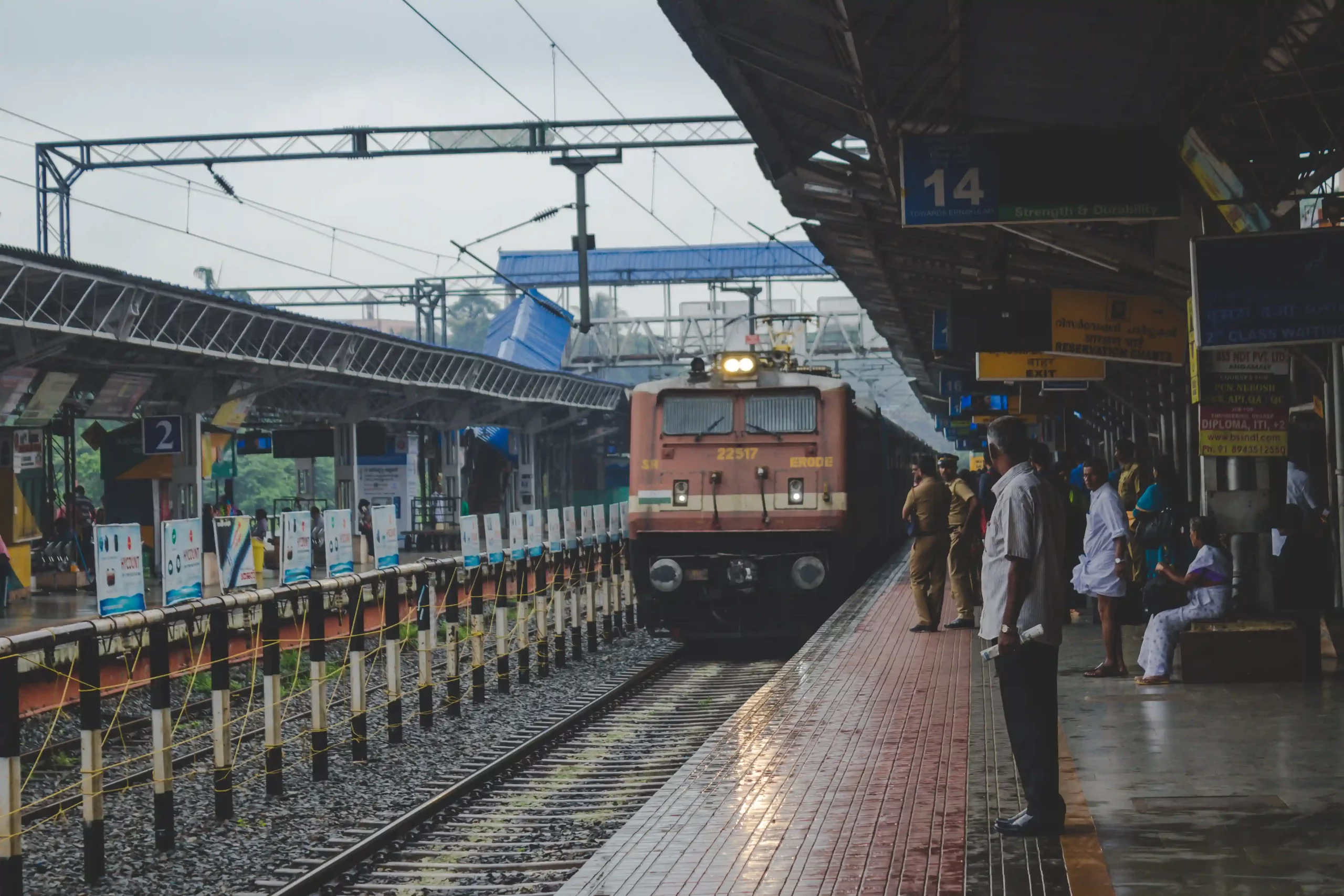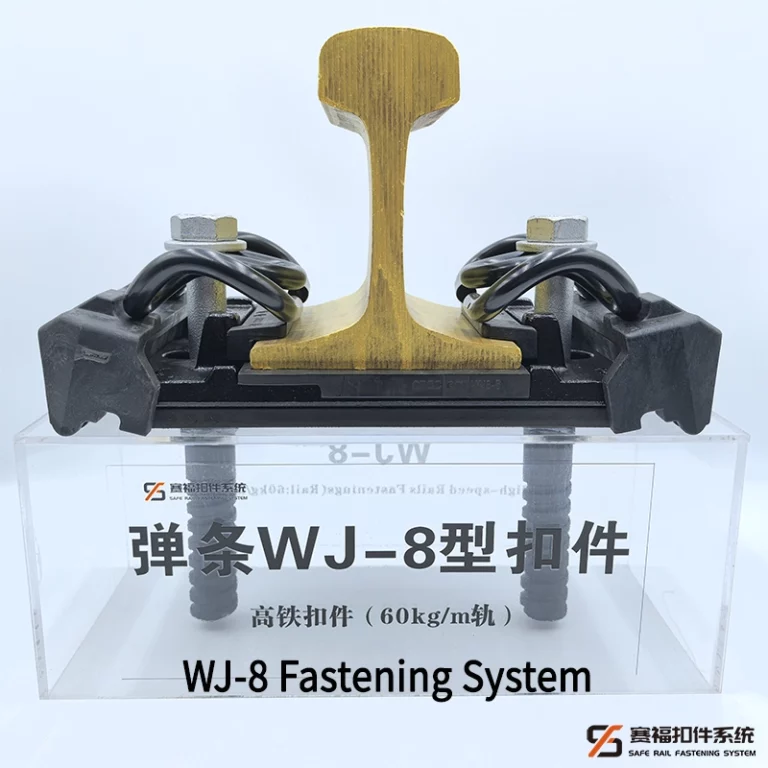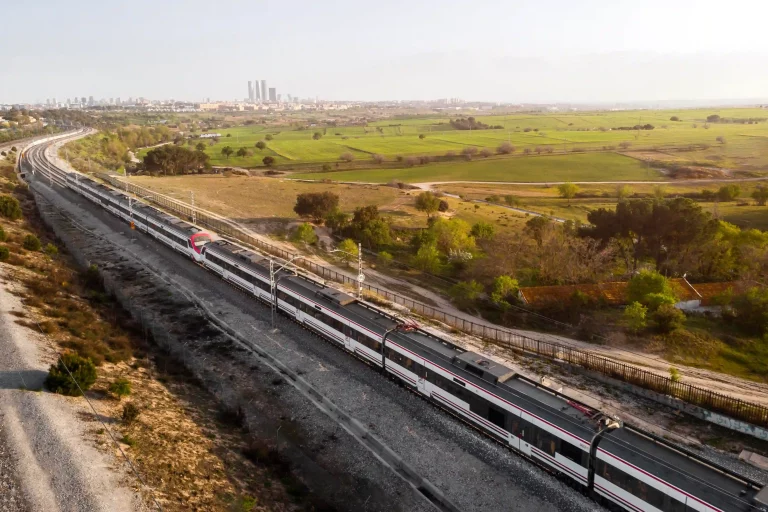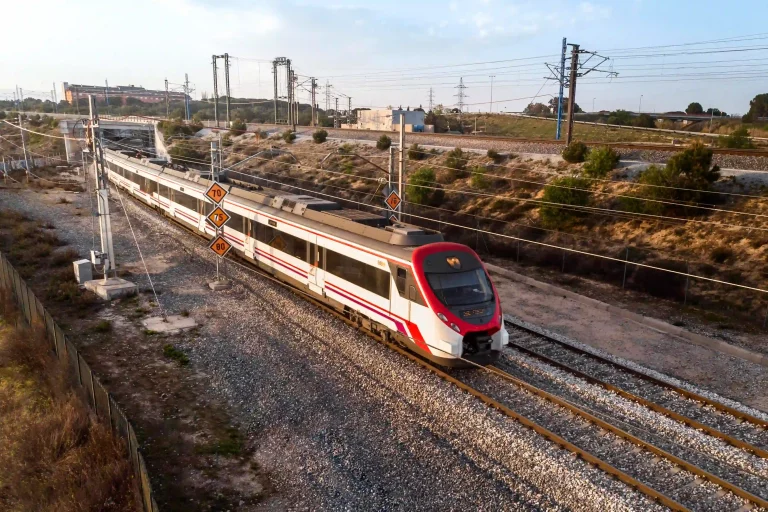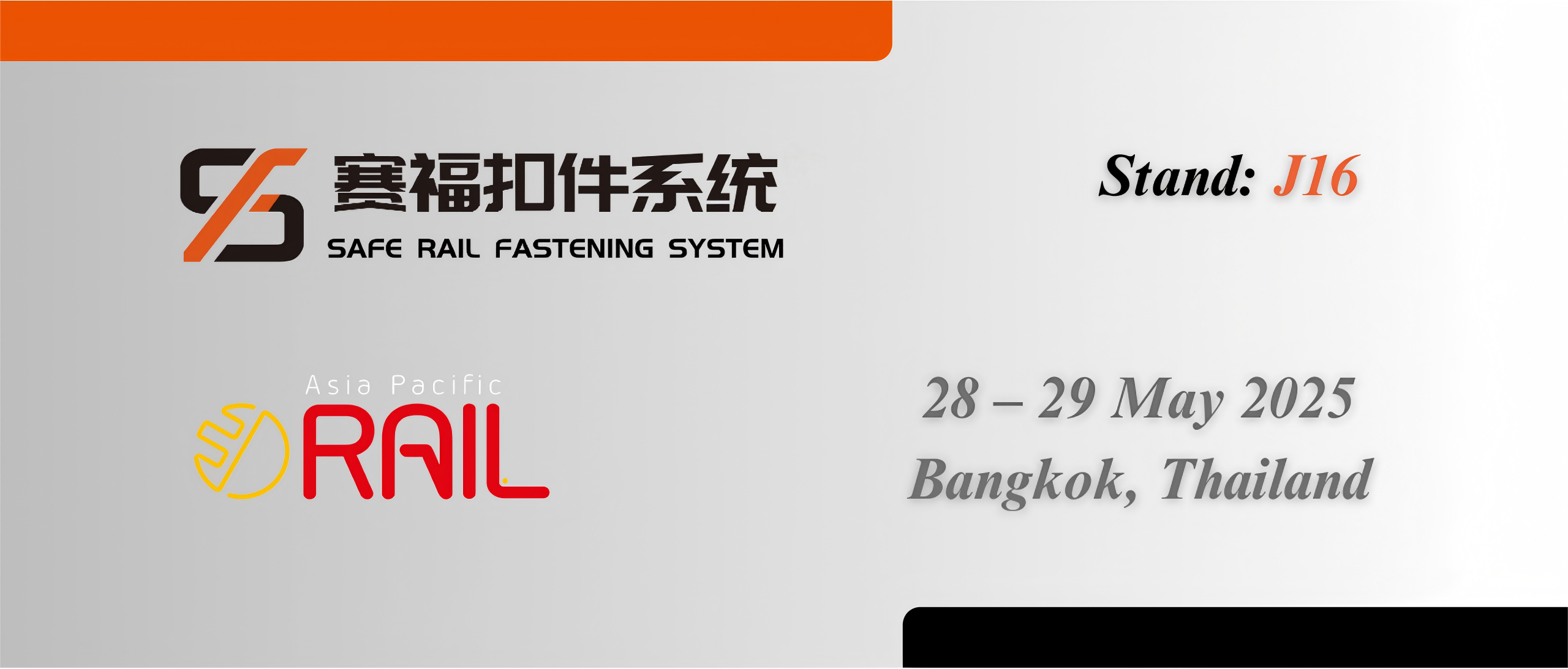Railway systems in Bangladesh are advancing quickly. This progress stems from the demand for effective, sturdy, and budget-friendly solutions. These solutions must support increasing passenger and cargo needs. For railway engineers, project leaders, and purchasing teams, picking the right components for rail fastening is vital. It ensures track steadiness, durability, and traveler comfort. The Elastic Pad for WJ-8 Rail Fastening System and Type V pads are two leading choices. Each has unique traits suited to specific track needs. This blog explores a detailed comparison of these pads. It focuses on their fit for Bangladesh’s rail networks, including high-speed, metro, and standard lines. By grasping their technical strengths, uses, and performance, you can make a wise choice for your rail projects.
Understanding Rail Fastening Systems in Bangladesh

Bangladesh’s rail network faces distinct challenges. High humidity is one issue. Heavy monsoon rains are another. The terrain varies from flood-prone flatlands to city pathways. Ballastless tracks are common in high-speed and metro systems. They need advanced fastening systems to maintain stability and cut upkeep costs. The elastic pad is a key part of these systems. It offers vibration reduction, load spreading, and track flexibility.
The Elastic Pad for WJ-8 Rail Fastening System is crafted for ballastless tracks. It delivers excellent performance in high-speed and urban settings. In contrast, Type V pads are adaptable. They are widely used in both ballasted and ballastless tracks, especially in traditional railways. To find the best fit for Bangladesh, let’s examine their features, benefits, and applications.
Key Features of the Elastic Pad for WJ-8 Rail Fastening System
The Elastic Pad for WJ-8 Rail Fastening System is designed to meet the tough demands of modern rail networks. It is especially suited for ballastless tracks. Its design follows global standards like TB/T 3395.5-2015. This ensures dependability under dynamic loads. Below are its standout traits:
- High-Quality Thermoplastic Elastomer: The pad uses cutting-edge materials. These provide superb flexibility and fatigue resistance. They reduce wear on rails and sleepers.
- Effective Vibration Reduction: The pad absorbs dynamic forces well. It minimizes noise and boosts traveler comfort. This is vital for city metro systems.
- Extended Durability: The pad’s robust build withstands harsh weather. It handles Bangladesh’s humid and rainy climate effectively.
- Seamless Fit with WJ-8 System: It integrates smoothly with WJ-8 Fastening System components. This ensures precise gauge control and track steadiness.
These traits make the elastic pad perfect for high-speed lines and metro systems. Stability and low upkeep are top priorities in these settings.
Why Elastic Pads Excel in Ballastless Tracks
Ballastless tracks are common in Bangladesh’s projects like the Padma Bridge Rail Link and Dhaka Metro. They need components that manage high dynamic loads. They also must reduce track settling. The Elastic Pad for WJ-8 Rail Fastening System shines in these conditions. Its low-stiffness design is a key factor. So is its strong fatigue resistance. The pad reduces rail movement at speeds up to 350 km/h and axle loads of 170 kN. This ensures safety and reliability. Plus, its vibration-reducing properties lower noise levels. This makes it ideal for crowded urban areas.
Exploring Type V Pads: Features and Applications
Type V pads are a flexible choice. They are used in both ballasted and ballastless tracks across traditional and metro railways. Their design focuses on adaptability and cost savings. This makes them popular for mixed-traffic lines. Key traits include:
- Wide Compatibility: They work with various fastening systems, such as Type V and SKL systems. This offers versatility for different track designs.
- Adequate Vibration Reduction: They provide sufficient noise reduction and load spreading. This suits traditional railways with lower dynamic loads.
- Budget-Friendly Design: Lower material costs make Type V pads a cost-effective option. They are ideal for large projects with tight budgets.
- Weather Resilience: They perform reliably in Bangladesh’s humid and flood-prone areas. However, they have less fatigue resistance than WJ-8 pads.
Type V pads are well-suited for traditional railways, like Bangladesh’s Dhaka-Chittagong line. These lines have moderate axle loads and speeds.
Type V Pads in Conventional Railways
Bangladesh’s traditional rail network handles mixed passenger and cargo traffic. Type V pads offer a practical solution here. They work well in ballasted tracks. This reduces installation complexity. It also lowers upkeep costs. However, their vibration-reducing ability is less advanced than the Elastic Pad for WJ-8 Rail Fastening System. This makes them less ideal for high-speed or urban metro lines. Noise reduction is critical in those settings.
Comparing Elastic Pad for WJ-8 vs. Type V Pads
To assist rail professionals in Bangladesh, the table below compares the Elastic Pad for WJ-8 Rail Fastening System and Type V pads. It uses key criteria:
| Criteria | Elastic Pad for WJ-8 | Type V Pads |
| Track Type | Ballastless (High-speed, Metro) | Ballasted and Ballastless (Conventional, Metro) |
| Vibration Damping | Outstanding (Perfect for urban areas) | Fair (Suitable for rural lines) |
| Fatigue Resistance | Strong (Longer lifespan) | Average (More frequent replacements) |
| Cost | Higher (Premium materials) | Lower (Cost-effective) |
| Weather Adaptability | Superb (Handles humidity, rain) | Reliable (Less durable) |
| Speed Compatibility | Up to 350 km/h (High-speed) | Up to 160 km/h (Conventional) |
Which Pad Suits Bangladesh’s Needs?
The choice between the Elastic Pad for WJ-8 Rail Fastening System and Type V pads depends on project needs:
- High-Speed and Metro Projects: The WJ-8 elastic pad is the better pick for projects like the Dhaka Metro or Padma Bridge Rail Link. Its excellent vibration reduction and fatigue ascendancy. This ensures long-term steadiness and traveler comfort in urban and high-speed settings.
- Conventional and Rural Lines: Type V pads are more fitting for Bangladesh’s traditional railways, such as the Dhaka-Chittagong corridor. Their affordability and compatibility with ballasted tracks make them ideal for budget-conscious projects with moderate traffic.
Bangladesh’s varied rail needs require a customized approach. For urban and high-speed lines, the Elastic Pad for WJ-8 Rail Fastening System delivers unmatched performance. For rural or mixed-traffic lines, Type V pads offer a practical, economical choice.
SAFE: A Leader in Rail Fastening Solutions
SAFE Rail Fastening System (Zhejiang) Co., Ltd. is a trusted name in railway engineering. It is based in Zhejiang Province, China. SAFE operates a modern facility spanning over 50,000 square meters. The company produces high-quality rail fastening systems and components, including the WJ-8 Fastening System and elastic pads. It has an annual production capacity of 5 million sets. SAFE serves traditional, high-speed, heavy-haul, and metro applications worldwide. Their dedication to innovation is clear. The SAFE Shanghai Research Center works with industry and academia to advance rail solutions. All products undergo strict testing. They meet global standards like EN 13146 and TB. This ensures reliability and safety. Explore their offerings at SAFE’s homepage.
FAQs About Elastic Pad for WJ-8 Rail Fastening System
Q1. What is the primary function of the Elastic Pad for WJ-8 Rail Fastening System?
A1. The Elastic Pad for WJ-8 Rail Fastening System provides vibration reduction, load spreading, and track flexibility. It absorbs dynamic forces effectively. This reduces noise. It also extends the lifespan of rails and sleepers in ballastless tracks.
Q2. How does the Elastic Pad for WJ-8 compare to other pads in terms of durability?
A2. The Elastic Pad for WJ-8 Rail Fastening System uses high-quality thermoplastic elastomers. These offer superior fatigue resistance and durability compared to standard pads. The pad withstands harsh weather and heavy loads. This ensures a longer service life.
Q3. Is the Elastic Pad for WJ-8 Rail Fastening System suitable for Bangladesh’s climate?
A3. Yes, the Elastic Pad for WJ-8 Rail Fastening System is built to perform reliably in humid and rainy conditions. It suits Bangladesh’s monsoon climate well. Its materials resist degradation. This maintains performance in tough environments.
Q4. Can the Elastic Pad for WJ-8 be used in conventional railways?
A4. The Elastic Pad for WJ-8 Rail Fastening System is optimized for ballastless tracks in high-speed and metro systems. However, it can be adapted for some traditional lines. Its premium features are most cost-effective in high-speed applications.
Upgrade Your Rail Project with the Right Elastic Pad
Choosing the right elastic pad is crucial for improving railway performance in Bangladesh. The Elastic Pad for WJ-8 Rail Fastening System offers outstanding vibration reduction, durability, and steadiness for high-speed and metro projects. Meanwhile, Type V pads provide a budget-friendly solution for traditional lines. By matching your choice to project needs, you can boost track durability. You can also cut upkeep costs and enhance traveler comfort.
Ready to advance your rail project? Explore SAFE’s rail fastening systems and resilient tie pads to find the ideal solution. Visit our conventional railway projects for inspiration. Or contact us to discuss your needs. Let’s build safer, more efficient railways for Bangladesh together!





